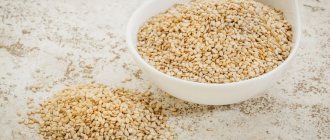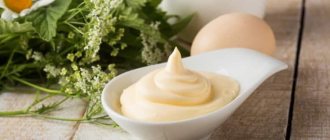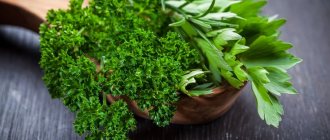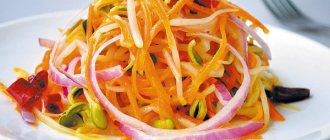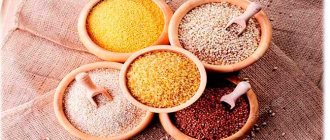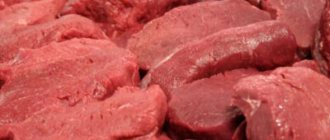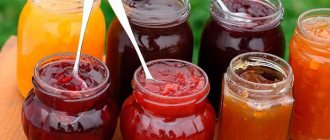Kohlrabi is a biennial plant belonging to the class of cabbage crops. The edible part of the vegetable is a semicircular stalk, from which 3-5 long leaves grow. Because of the characteristic shape of the stem, kohlrabi is popularly called “cabbage turnip.” The plant is classified as a highly nutritious product because it contains many useful substances (easily digestible carbohydrates, vitamins, minerals, enzymes, dietary fiber).
In terms of vitamin C content, cabbage turnips are superior to most cruciferous and citrus crops (including cabbage and lemon). In addition to its high nutritional value, the pulp of the stem fruit has a pleasant sweet-nutty taste. Because of this, the product is actively used in cooking.
General information
The first mentions of kohlrabi were recorded in the 16th century AD. The Romans called the vegetable “caulorapa,” which translated means “stem turnip.” In the old days, kohlrabi was considered a weed crop, which is why it was consumed only by the poor. The plant gained real popularity only in the 17th century, when German peasants began growing the vegetable.
Content:
- General information
- Chemical composition
- Beneficial features
- Features of cultivation
- Use in folk medicine
- Application in cosmetology
- Use in cooking
- Conclusion
The homeland of stem cabbage is the island of Sicily, from where it spread throughout the continent. Today, kohlrabi is grown in almost all countries of Europe, America and Central Asia. In addition, due to its cold-resistant properties, the plant is cultivated in the northern regions of Russia (Sakhalin and Kamchatka).
In appearance, the vegetable resembles a round rutabaga, and in taste, it resembles the core of white cabbage. However, unlike its “brothers”, it has a more juicy sweet pulp containing about 90% water. The diameter of the average kohlrabi stalks is 7-10 cm, and the weight is 200-600 g. The color varies from light green to dark purple.
The vegetable is classified as an early-ripening crop, since its growing season is only 2-2.5 months. In view of this, in one season it is possible to harvest from 2 to 3 cabbage crops. Interestingly, early varieties of kohlrabi are unsuitable for long-term storage (as they have delicate flesh). Later types of cabbage have a denser core, which increases their shelf life.
Root vegetables are stored in the basement, first sprinkled with moistened sand.
Chemical composition
Kohlrabi is classified as a dietary product, since 100 g of its pulp contains no more than 44 kcal. However, despite the low calorie content, the vegetable has high nutritional value (due to the content of vitamins, minerals, saccharides, antibacterial substances, dietary fiber, pectins).
The leaves of the cabbage turnip contain 2 times more nutrients than the stem fruit.
Nutritional value of kohlrabi
| Name | Substance content in 100 grams of stem fruit, grams |
| Water | 86,2 |
| Carbohydrates | 7,9 |
| Squirrels | 2,8 |
| Alimentary fiber | 1,7 |
| Ash | 1,2 |
| Fats | 0,1 |
Chemical composition of kohlrabi
| Name | Nutrient content per 100 grams of raw product, milligrams |
| Vitamins | |
| Ascorbic acid (C) | 52 |
| Niacin (PP) | 1,2 |
| Tocopherol (E) | 0,2 |
| Pantothenate (B5) | 0,17 |
| Pyridoxine (B6) | 0,17 |
| Thiamine (B1) | 0,06 |
| Riboflavin (B2) | 0,05 |
| Folate (B9) | 0,018 |
| Beta carotene (A) | 0,008 |
| Macronutrients | |
| Potassium | 370 |
| Phosphorus | 50 |
| Calcium | 46 |
| Magnesium | 30 |
| Sodium | 10 |
| Microelements | |
| Iron | 0,6 |
| Manganese | 0,14 |
| Copper | 0,13 |
| Zinc | 0,03 |
| Selenium | 0,0007 |
Kohlrabi pulp contains natural antioxidants with antitumor and anticarcinogenic activity (sulforaphane, sinegrin, indole-3-carbinol).
What are the benefits of kohlrabi for the human body?
Kohlrabi is very rich in nutrients and has various beneficial properties.
Rich in antioxidants
Kohlrabi contains a wide range of antioxidants such as vitamin C, anthocyanins, isothiocyanates and glucosinolates. These are plant compounds that protect your cells from free radical damage that can otherwise increase your risk of developing diseases (,).
A diet high in antioxidant-rich vegetables, such as kohlrabi, is associated with a reduced risk of diabetes, metabolic disease, and premature death ().
The skin of purple kohlrabi is especially rich in anthocyanins, a type of flavonoid that gives vegetables and fruits their red, purple or blue color. High anthocyanin intake is associated with a lower risk of cardiovascular disease and dementia (, , ).
All colored varieties of kohlrabi are rich in isothiocyanates and glucosinolates, which are powerful antioxidants associated with a lower risk of certain cancers, heart disease and inflammation (, , ).
Promotes a healthy gut
Kohlrabi contains a large amount of fiber. In fact, you can get about 17% of your daily fiber needs from one 135-gram serving of this vegetable ().
It contains soluble and insoluble fiber.
The former is water soluble and helps maintain healthy blood sugar and cholesterol levels. On the other hand, insoluble fiber is not broken down in the intestines, which helps increase stool bulk and promote regular bowel movements ().
Moreover, fiber is a major food source for healthy gut bacteria such as bifidobacteria and lactobacilli. These bacteria produce short-chain fatty acids that nourish your intestinal cells and may protect against heart disease and obesity (,).
In addition, healthy gut microbiome is associated with a healthier immune system and a lower risk of obesity and gut disease (, , , ).
May reduce the risk of cardiovascular disease
Kohlrabi contains powerful plant compounds called glucosinolates and isothiocyanates, which are primarily found in cruciferous vegetables.
A high intake of glucosinolates is associated with a lower risk of developing cardiovascular disease due to this compound's ability to dilate blood vessels and reduce inflammation. In addition, isothiocyanates have antioxidant properties that can prevent the formation of cholesterol plaques in your arteries ().
A long-term study of 1,226 women aged 70 years and older found that a diet rich in cruciferous vegetables was associated with a 13% reduction in the risk of death from cardiovascular disease for every 10 gram increase in fiber intake per day ().
In addition, purple kohlrabi is high in anthocyanins, which have been shown to reduce blood pressure and the risk of heart attack (, ,).
Finally, a high-fiber diet may protect against heart disease. One review of 15 studies found that a diet rich in this nutrient reduced the risk of death from heart disease by 24% compared with diets low in fiber (, ).
Supports a Healthy Immune System
The nutrients in kohlrabi can support your immune system.
This vegetable is rich in vitamin B6, which is important for many functions, including protein metabolism, red blood cell development and immune function ().
Vitamin B6 is involved in the production of white blood cells and T cells, which are types of immune cells that fight foreign substances and are key to a healthy immune system. Deficiency of this nutrient is associated with a weakened immune system (, ).
Additionally, kohlrabi is an excellent source of vitamin C, which can support white blood cell function and ultimately strengthen your immune system ().
Summary:
Kohlrabi contains nutrients and antioxidants that can strengthen the immune system and reduce the risk of developing chronic diseases. In addition, its high fiber content supports healthy intestinal microflora.
Beneficial features
Cabbage turnips, due to their low calorie content and high nutritional value, are successfully used in dietetics.
Beneficial features:
- Accelerates the removal of excess fluid from the body, reduces the likelihood of edema (potassium).
- Improves the condition of the oral cavity (the fibers massage the gums, and the juice provides natural sanitation to the pharynx).
- Normalizes the frequency of muscle and heart contractions (sodium, potassium, magnesium).
- Strengthens the vascular wall, increases the elasticity of veins and arteries, reduces blood viscosity (vitamin C).
- Improves lipid metabolism (fiber and pectin fibers).
- Increases the acidity of gastric juice (organic acids).
- Strengthens intestinal motility, accelerates the elimination of toxic waste (ballast substances).
- Slows down the process of carbohydrate absorption, prevents the development of insulin resistance, and prevents the transformation of saccharides into adipose tissue (tartanic acid).
- Suppresses the growth of pathogenic bacteria that cause stomach ulcers and caries (antibacterial substance sulforaphane).
- Activates natural anti-cancer immunity (indole-3-carbinol and sinegrin).
- Stabilizes blood pressure (magnesium).
- Improves psycho-emotional background (vitamins B and C).
Contraindications to consumption of kohlrabi cabbage (raw):
- peptic ulcer;
- acute form of pancreatitis;
- hyperacid gastritis;
- hypotension;
- individual intolerance.
If flatulence occurs due to the consumption of vegetables, the diet is enriched with spices (dill, fennel, cardamom, cloves). In addition, bacteria (probiotics) are introduced into the daily menu, since gas formation in 90% of cases signals a weakening of the microflora.
Benefits of kohlrabi
The benefits of kohlrabi were known back in antiquity. It was used for both culinary and medicinal purposes. And this is completely justified. The benefits of kohlrabi are explained by its rich and varied composition. It is famous for its significant content of vitamins A, C, B. Kohlrabi has a lot of calcium, potassium, selenium, magnesium, iron and a good half of the periodic table.
Kohlrabi is indispensable for diseases of the digestive system; it rids the intestines of toxic substances. It has a healing and anti-inflammatory effect, relieving irritation of the mucous membrane of internal organs. Kohlrabi helps improve the functioning of the liver and gallbladder. This cabbage increases appetite and improves metabolic processes in the body.
Kohlrabi is famous for its unique ability to serve for the prevention of cancer. It lowers blood pressure and normalizes the functioning of the nervous system. Thanks to the consumption of kohlrabi, excess cholesterol is removed from the body, which prevents the development of atherosclerosis. Kohlrabi helps restore water balance.
Kohlrabi roots are used to prepare a decoction, which is an excellent remedy for treating tuberculosis and asthma. Fresh cabbage juice relieves coughs, relieves inflammation of the mouth, helps with diseases of the kidneys, spleen, and anemia.
It is remarkable that the beneficial properties of kohlrabi do not weaken when consumed in any form. There are a huge number of recipes for kohlrabi dishes. It is added to salads, stewed, boiled, baked. The calorie content of kohlrabi is 44 kcal. per 100 gr. In this regard, it is recommended for people who are obese and those who dream of an ideal figure and control their weight. The benefits of kohlrabi in dietary nutrition are also due to the fact that it contains tartronic acid, which prevents the conversion of carbohydrates into fats, which, without a doubt, is extremely beneficial for the figure.
Features of cultivation
Kohlrabi cabbage is less demanding on growing conditions than other cruciferous plants. In addition, it is resistant to cold and gets along well with vegetable crops. The optimal temperature for its growth is 15-18 degrees. If this indicator drops below +6 degrees (within 5 days), young plants stretch into stems (stems are not formed).
Cabbage turnip prefers slightly acidic and neutral soils (pH 5.5-6.8). In addition, for successful cultivation of the vegetable, it is important to maintain constant soil moisture (due to the shallow root system). With a lack of liquid, the spherical stems become woody and then covered with small cracks.
Kohlrabi is grown both by seedlings and by sowing. To obtain an early harvest (in May), the grains are planted in boxes at the end of February. To collect vegetables in the summer, the seeds are placed in peat cups in mid-April.
To get an autumn harvest, the crop is planted in a greenhouse in early July. After germination, the containers are transferred to a cool place (10-15 degrees). Seedlings are planted in open ground at the stage of 5-6 true leaves (pre-hardened). The duration of seed growth (from sowing to picking) is 35-45 days.
Remember, before planting a cruciferous crop, it is important to thoroughly prepare the soil. To do this, the soil is dug up (without turning the layer), and then nitrogen fertilizers are applied (manure compost is possible).
The best predecessors for kohlrabi are tomatoes, onions, potatoes, pumpkin, legumes and grain (winter) crops. After planting the plants (at a distance of 20 cm from each other), the soil is compacted and watered abundantly.
Late varieties of kohlrabi are sown in open ground (in mid-May). In this case, each grain is placed in a separate hole 2 cm deep. After the appearance of the 2nd leaf, the seedlings are thinned out.
Caring for cabbage comes down to regular watering, loosening the soil and weeding. In addition, the plant is fed with fertilizers twice during the growing season: 2 weeks after planting - with fermented organic matter, and after 20 days with a solution of superphosphate with potassium.
The harvest date is determined by the stalk: if a scratch remains on the “turnip” after rubbing with a fingernail, the stalk is ripe.
How to cook kohlrabi cabbage
Ideal cooking is the absence of it. Your body will only thank you for this. However, we understand how unlikely it is that you will appreciate the taste of raw stem fruit without additives. Therefore, we recommend grating the kohlrabi, adding vegetable oil, salt and carrots. After which you can safely call this salad “Health” and put it on the table.
If you prefer cooked food, you can stew, boil or fry kohlrabi in batter.
Particularly sophisticated chefs prepare stews and pancakes from kohlrabi cabbage. Well, cabbage rolls lovers simply cut out all the insides from kohlrabi and fill the resulting “vessels” with their favorite minced meat.
In addition, kohlrabi cabbage is pickled, baked with cheese, sprinkled with lime juice, flavored with soy sauce, and delicious vegetable soups are also prepared from it. But that’s not all... Not only stem fruits are used, but also kohlrabi leaves, which, with the help of simple manipulations by the skillful hands of the cook, are turned into a filling for salads, a side dish for fish, poultry or meat, as well as minced meat for vegetable cutlets.
It should also be noted that stem fruits that do not exceed 6 cm in diameter are considered the most delicious. The color of the fruit can be anything: from green to purple (depending on the variety and has a slight effect on the taste). The main thing is that the product is fresh and not “chemically contaminated” by careless farmers.
As for the ideal culinary “companions” for kohlrabi, these include cucumbers, chicken, carrots, shrimp and any fish.
Use in folk medicine
To prepare medicinal potions, the juice and tops of fresh stem fruits are used. Remember, infusions, decoctions, and cabbage turnip cocktails cannot replace full-fledged drug therapy; they are used as an aid in the fight against the disease.
Compositions based on kohlrabi are effective in the treatment of tuberculosis, bronchial asthma, vitamin deficiency, influenza, neurosis, non-healing weeping wounds, anemia, gingivitis, stomatitis, hypoacid gastritis.
Traditional recipes:
- A remedy for reducing cough syndrome (for bronchitis, asthma, tuberculosis). Kohlrabi tops are used as the active ingredient. To prepare the medicine you will need 400 ml of water and 60 g of fresh cabbage leaves. These components are boiled for 20 minutes over medium heat, after which the mixture is cooled and filtered. In case of exacerbation of the disease, the composition is taken 5 times a day, 150 ml.
- Anti-inflammatory drink with honey. The main ingredient of the healing mixture is freshly squeezed kohlrabi juice. To create a drink, it is better to choose medium-sized stem fruits. After this, the stalks are crushed on a grater, transferred to a piece of gauze and the juice is squeezed out. Before use, add liquid honey (10 ml).
The drink is taken three times a day, 70-100 ml (warm). If well tolerated, the single dose is increased to 200 ml (gradually). The course of treatment is 30-60 days. After 4-6 months, cabbage therapy is repeated (if necessary).
Fresh kohlrabi juice is used for colds, hypoacid gastritis (reduced secretion of gastric juice), hepatitis, cholecystitis, anemia, insomnia, and menopausal neuroses.
In case of exacerbation of pancreatitis, gastritis (hyperacid) or ulcers, it is better to avoid taking this drug.
- Nutrient mixture to strengthen the heart muscle. Ingredients: kohlrabi (220 g), cucumbers (120 g), cilantro (10 g). Squeeze juice from vegetables, combine with chopped herbs. Take 100 ml three times a day. Duration of treatment – 1 month.
- Vitamin cocktail for immunity. To create the potion you will need 150 ml of kohlrabi juice, 100 ml of carrot juice, 50 ml of beet juice, 50 ml of sauerkraut brine (white cabbage). Combine these ingredients and mix thoroughly. The vitamin cocktail is taken twice a day, 50 ml. During the cold season, the frequency of administration is increased to 4 times a day.
- Freshly squeezed cabbage juice for insomnia. Take 100 ml 50 minutes before going to bed (daily).
People suffering from nervous disorders are recommended to include as many cabbage dishes as possible in their diet. These products contain vitamins C and B, which normalize a person’s psycho-emotional background.
Remember, cabbage juice is consumed only warm (to avoid flatulence, belching, heartburn and pain).
Kohlrabi pulp contains caustic isothiocyanate (allylic mustard oil), which irritates the gastric mucosa. To remove the “toxic” ester, cabbage juice is heated in a water bath for 2-3 minutes (with constant stirring).
Application in cosmetology
Due to its high concentration of nutrients, kohlrabi is successfully used in the cosmetics industry. Based on this product, rejuvenating masks are prepared for oily and aging facial skin.
Homemade beauty recipes
- Rejuvenating mask for oily skin. Peel a small head of kohlrabi and then chop it on a fine grater. Combine the cabbage mixture with 10 ml of honey and 10 g of fresh yeast, leave for 15 minutes. After this, pour 15 ml of freshly squeezed orange or apple juice into the mixture. Apply the mask to cleansed dermis for 20 minutes.
With regular use of the composition (2 times a week), the texture of the dermis noticeably improves, the complexion is evened out, and oily shine is reduced.
- Whitening mask for any skin type. Mix grated cucumbers and kohlrabi in equal proportions. Place the vegetable mixture on a piece of gauze. Apply the composition to the face for 15 minutes.
For oily skin, you can add 1 egg yolk, lemon juice (2 ml) and juniper essential oil (1 drop) to the mask. For those with dry skin, it is advisable to use boiled cabbage.
The mask has a moisturizing, whitening, toning and anti-inflammatory effect on the skin. Frequency of use: 1 time per week.
- Cleansing mask for problem skin. Ingredients: 50 g kohlrabi (grated), 20 g oatmeal, 10 ml sauerkraut juice, 5 ml sour cream, 1 drop jojoba oil. Preparation principle: pour 20 ml of boiling water over rolled oats, let stand for 5-7 minutes. Add the remaining ingredients to the steamed porridge. Apply the resulting composition to a cleansed face for 20 minutes (do not rub in). Use 2 times a week.
The composition is used to combat acne, comedones and blackheads.
- Softening mask for normal and combination skin. Pass kohlrabi (200 g) and carrot stalks (100 g) through a meat grinder. Squeeze juice from vegetables. Mix cabbage and carrot nectar with 7 ml of honey, 5 ml of homemade sour cream, 1 ml of olive oil. Apply the composition to the face in a thin layer. After 10 minutes, wash with warm water and lemon juice.
The product is used to eliminate excessive dryness of the skin, brighten the complexion, and reduce the number of acne.
- Nourishing mask for very dry flaky skin. Boil kohlrabi tops in homemade milk (7 minutes), then puree the leaves. Combine the resulting mass with a chicken egg and 10 ml of vegetable oil (olive, wheat germ, almond or jojoba). Before performing the procedure, it is important to thoroughly clean the skin (to avoid blockage of the sebaceous ducts). Apply the composition to a moistened face for 15 minutes. This product soothes irritated skin, lightens age spots (including bruises after an injury), and eliminates tightness in the upper layers of the dermis.
Cabbage juice is effective in the fight against vitiligo and warts. To reduce foci of depigmentation, freshly squeezed nectar is applied to the affected skin once a day (at night).


